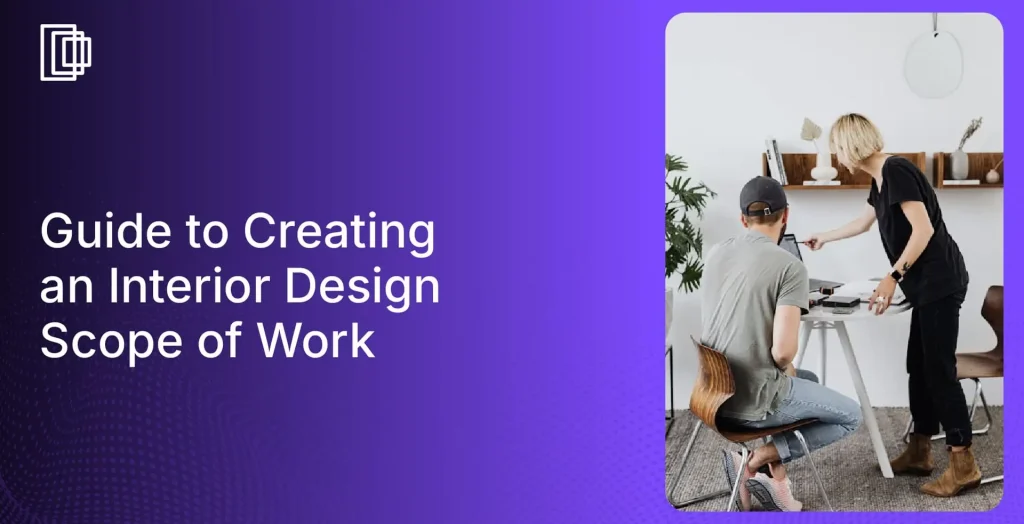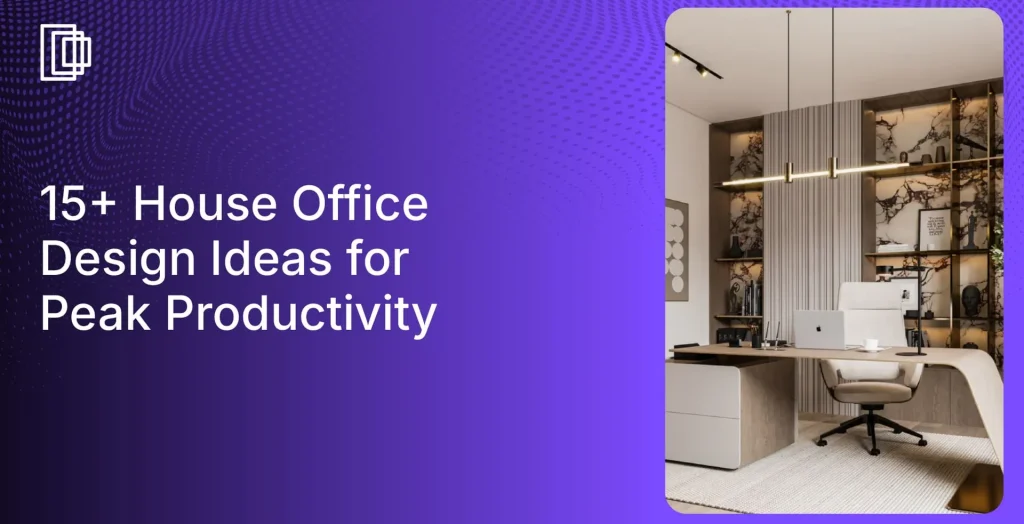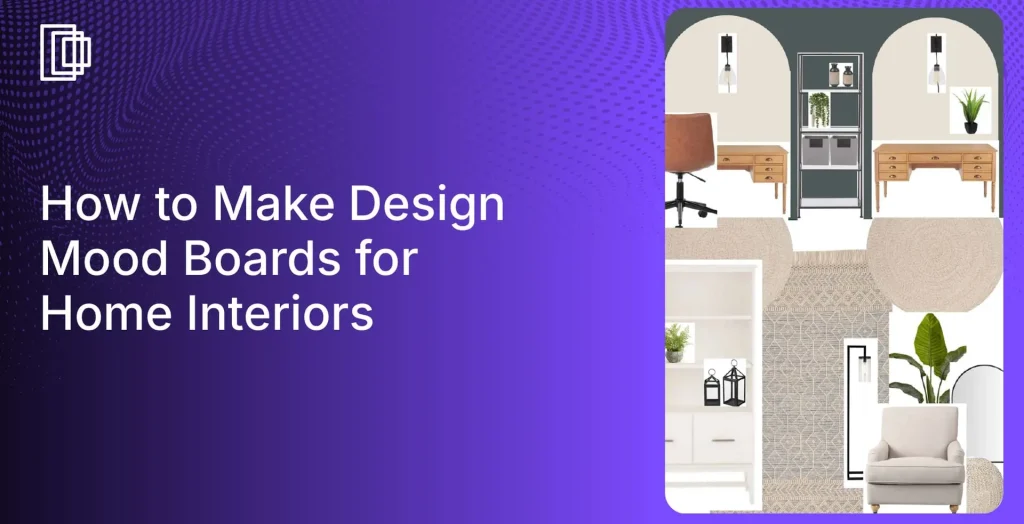Today, human beings are hyper-conscious of their surroundings and how they look, such as their office and home décor. This sensitivity has led to the profession of interior designing finding a niche for itself and gaining massive traction over the last few decades.
The job profile of an interior designer not only limits itself to the designing aspect but also requires them to handle other facets, such as resource and time management.
Further, their job requirements vary from one assignment to another, and so do their client expectations. While some interior design projects may demand a focus on aesthetics, others may want to optimize space planning or storage spaces.

In addition, the spaces they require to work on vary too, such as from large corporate offices to lavish homes and from hotel lobbies to hospitals. Given the diversity involved, there is little doubt that it makes for an exciting career.
Still, there is one fundamental thing that many interior design professionals struggle with – their scope of work (SOW). It requires you to at times restrict your creative sides and understand project management to ensure you meet all the client’s needs, but given the excitement and the thrill to develop something new, it can be a tough ask.
This article discusses the basics of interior design scope of work and its benefits along with the detailed scope of work required to keep your projects profitable.
Read also – How to Write An Interior Design Proposal to Win Your Clients?
What is an Interior Design Scope of Work?
Like most other assignment-based or project-based tasks, the interior design scope of work is a thing too. It is a brief and self-explanatory document containing a simple description of work for the project team.
The document lays down the project goals and relevant design elements for the particular project. It functions as a step guide that includes the project title, project location, and a clear project description. It includes features such as reports, procurement projections, milestones, deliverables, pricing, end products, time frame, and the scope of services to be provided. These are also shared with the client so that they know the purported delivery deadline and how the interior design project will move forward.
Read also – A Guide To Client Process Document for Interior Designers
What should an Interior Design Scope of Work Contain?
While the SOW acts as a contract, it is imperative for you to cover all the bases. You need to ensure your team and the client understand how the design process would move forward.
Here are the key components of a comprehensive scope of work: –
1. Construction administration
At the start of a project, you need to align with the client’s vision. This section should outline how you handle the initial concept. Will you use a joint Pinterest board to collaborate on ideas? Will there be mood boards presented? You should also mention if you will set style guide parameters early on. This is where you define the creative aspect of the project.
2. Documents and Detailed Drawings
A comprehensive scope of work must list the deliverables. This includes detailed design drawings and furniture schedules. If the project involves a full renovation or structural changes, you must specify if you are providing the technical plans for those changes. Being an interior designer, it is your responsibility to detail down the work undertaken by you during the project’s timespan.
3. Day-to-day reporting
Interior design projects can continue for months. Being an interior designer, it is your responsibility to detail down the work undertaken. How will you handle regular client updates? Will you send a weekly email with meeting notes? Defining the communication channel prevents the client from calling you at all hours.
4. Site representation
If you are building something new, suggestions from interior designers are vital. The construction administration clause covers your interaction with the general contractor. You need to define the frequency of regular site visits and site meetings. Are you responsible for quality control and supervision of design intent during the construction process? Be specific. For example, state that you will perform a site visit once a week to check on the installation of all elements.
5. Ancillary services
The job profile is dynamic. You might need to include specific needs like the installation of furniture, coordinating product warranties, or even arranging professional photography for final images once the project is done.
Benefits of Interior Design Scope of Work
The interior design scope of work is beneficial for the following reasons –
1. Helps focus on significant project goals
The document lays down all the essentials pertaining to a given project. It covers the technical part, such as describing floor plans, specified furniture layouts, elevations, and other project goals based on existing site conditions.
A practical SOW helps all the design team members understand their responsibilities with greater clarity and allows each individual to focus on achieving each project goal through effective planning.
2. Gives the team a higher chance of succeeding
When your interior design team has a template that describes the task and how to go about it, they can figure out the easy and critical parts of the project. It allows them to undertake greater care while dealing with difficult or susceptible parts of the task and leverage their strengths during crucial times.
Therefore, a well-developed interior design scope of work is a critical enabler for determining the success rate of a project.
Read also – How To Build An Interior Design Team for Your Design Projects?
3. Helps embark on precise communication
When you have assigned the responsibility of the different tasks to team members before the onset of the project, it helps get rid of ambiguity. With a scope of work, you can delegate the mandatory tasks.
In addition, if an assignment is critical or vital for the project’s success, the lead interior designer can also lay down the needs for the same. All of it allows the team to understand their role in the task and helps establish a clear communication path for execution.
Types of Interior Design Scope of Work
Given the purpose it serves, the interior design scope of work is one of the vital construction documents for all scenarios. But professional interior designers often differentiate between the types of the scope of work they create depending on the technicalities involved, project management levels, and other criteria.
Listed below are the types of interior scope of work you are likely to come across in the designing industry.
1. Construction Scope of Work
The interior construction scope of work is a construction administration and planning document for new constructions. It is a document designed in collaboration with interior architects, engineers, lead interior designers, and other vital construction team members.
It lays down the interior framework and the requisite features to suit the human use case the project will serve. The lead interior designer and the engineer lay down the vision on paper or digital renderings for the purported completed task. The construction team is then expected to give shape to the vision.
Read also – How To Create Interior Design Packages for Your Business?
2. Renovations Scope of Work
A renovation scope of work is used for interior and exterior renovation projects. Whether it is a typical residential design project or a commercial refit, you have several bottlenecks present here, such as the existing site conditions and structural limitations. Completeness and uniformity are vital here.
Completeness and uniformity are often the most vital attributes here as interior designers have to keep in mind the existing parts of the structure and ensure the additional work is in alignment.
Read also – 20 Best Home Renovation Apps and Software
3. Designing Scope of Work
The very foundation of the interior design profession is concept development for your own design process. But given that the term ‘designing’ gets inspiration from a plethora of different entities, such as fine arts, society, and more, it is vital to bring them all under the same roof with the help of designing the scope of work. This document presents the different design elements of the task and explains how they will be executed, both to the design team and the client.
4. Finishing Project Scope of Work
A client prefers painting, while another may have an affinity for wood finishes. Each project is a different challenge. A finishing project scope of work lays down the work required for the final finishing, including home maintenance instructions or a handover folder for the client.
Read also – How to create a interior design portfolio
Read also – 20 Best Client Presentation Tips for Interior Designers
10 Tips on How to Create an Interior Design Scope of Work
Here are some key tips to help you create an interior design scope of work:
1. Keep it brief and add visual elements
The answer to how to write an interior design scope of work shouldn’t seem like an elaborate book in itself. While it is easy to go overboard while developing a scope of work, make sure you know the limits.
Spending time writing everything line-by-line will not only require your time but will also slow down the process during the execution phase. So make sure you keep it to the point and only include necessary things.
In addition, no one would like to read an elaborate document without any visual additions. Adding images and other visual elements would not only curtail your efforts while designing it, but it would also allow your team to visualize your planning and execution expectations better.
Read also – The Complete Guide To Prepare An Interior Design Contract

2. Finalize the document at the early stages of the project
SOW is a document that finds usage throughout the project execution phase. Be it furniture schedules, light fixtures, or any other design element, preparing the document early allows for better final decisions. It’s a good idea to get this signed off before you spend any money.
Read also – Interior Design Client Questionnaire

3. Take the help of an expert
You specialize in interior design work, but that doesn’t mean that you will also have expertise in the documentation part of it. So it is always wise to take the help of an expert, especially for the critical aspects of the project. It is a likely need that you will have to hire a technical writer with expertise in SOW to help you express your requirements and expectations with greater elan.
With Foyr Community, we are making it easier for you to meet interior design experts and take their help whenever necessary. It is a community where interior designers and clients meet to discuss ideas and suggestions for improved SOW preparation. You can join it for free and be a part of a community that thrives on helping each other.
Read also – 10 Tips for Interior Designers to Deal With Supply Delays

4. Do not miss out on mentioning what the project won’t include
When it comes to interior design, there is a risk of going overboard. It is vital that you list what the project won’t include. This helps manage the specific needs of each project without succumbing to scope creep. If you don’t handle home maintenance post-project, state it clearly.
Read also – How To Master Sourcing and Procurement For Interior Design?

5. Keep the strengths and weaknesses of the team members in mind
Your team member X may specialize in space management, while team member Y can have expertise in the floor planning. So it is key for you to evaluate the skill sets of each of your team members beforehand and allot tasks accordingly.
Selecting the ideal person for each sub-task would help you save time and execute processes with a greater success rate. If you feel you need additional people for a specific task, preparing an SOW would showcase the need from the onset.
Read also – Editorial Calendar for Interior Design Marketing Plan

6. Set realistic timelines
As an enthusiastic leader, you strive for efficiency. However, you must be realistic. Be clear about your hourly rate if the project goes beyond the fixed fee. Also, define how many hour meetings are included in the package.
If your team sees every project as a routine job, they will start feeling monotonous, impacting their efficiency in the long run. So it is vital for you to break down every project into manageable subtasks with acceptable due dates to allow everyone to take their time and execute their responsibilities in the best way possible.
Read also – What Does An Interior Designer Do?

7. Collaborate
As lead interior designers, we often feel that all of it is about ourselves. But a good manager understands each team member’s role and gets them on board from the onset of each project. In addition, using the best collaborative tools along with a templated version of a scope of work for typical projects would allow you to undertake agile project management with utmost ease.
Read also – 35 Best Collaboration Tools for Interior Designers

8. Communicate
As a leader, it is okay to feel vulnerable at times. If you are struggling with one or more aspects of SOW for a project, it is always better to communicate the same to your team members.
Inviting their suggestions and feedback would make you approachable and make the process feel a whole less technical. If you think someone has performed their task well, do not forget to communicate and also give regular tips to your team members for improving their efficiency and finesse.
Read also – A Guide for Interior Design Business Costs

9. Acknowledge milestones
Completing every milestone is a big deal. Whether it’s the final walkthrough or the approval of the concept development phase, celebrate it. This boosts morale and keeps the intensity up.
Read also – How To Create An Interior Design Website?

10. Plan for contingency
When a project spans days or months, it would be detrimental if you do not plan for contingency. Given the variables at play, there will invariably be days when team productivity is down or when certain subtasks don’t go as planned. Instead of ruing the missed opportunity and fretting about your team, it is vital to acknowledge the presence of contingency and plan. It would help you stay prepared and keep the team motivated.
Read also – 15 Best Client Retention Strategies For Interior Designers

Manage your Interior Design Projects End-to-End with Foyr Neo
Ready to stop drowning in paperwork and start designing? Foyr Neo isn’t just a pretty rendering tool; it’s your command center. You can manage your interior design scope of work effortlessly, keeping every detail aligned from the first sketch to the final reveal, ensuring you and your client are always on the same page.
- Use our powerful cloud-based 3D modeling engine to create and visualize complex design concepts instantly from any device.
- Instantly generate precise 2D floor plans to significantly accelerate your documentation workflow and ensure absolute scope of work accuracy.
- Produce stunning and photorealistic 12K renders in minutes to effortlessly sell your vision and drastically reduce the rounds of revisions.
- Offer immersive 3D walkthrough videos to clearly communicate the full scope and deliverables to your clients without ambiguity.
- Utilize our expansive drag-and-drop catalogue featuring over 60,000 ready-to-use 3D models to furnish your designs with incredible speed.
Don’t let scope creep eat your profits. With our interior design software, you clarify expectations visually, ensuring your client sees exactly what they are paying for. It’s time to streamline your workflow, protect your bottom line, and get back to doing what you love the most: interior designing. Start your 14-day free trial of Foyr Neo today and start designing.
FAQs
What are the duties of an interior designer?
An interior designer’s duties go far beyond decoration. They include space planning, ensuring building code safety, drafting the interior design scope of work, selecting materials, managing budgets, ongoing review of construction, and overseeing the installation of furniture. They bridge the gap between creative vision and practical execution.
What is a project scope in interior design?
The project scope, or interior design scope of work, defines exactly what will—and won’t—be done. It outlines deliverables, timelines, budget limits, and specific tasks like ‘kitchen renovation’ or ‘living room furnishing.’ It protects you from ‘scope creep,’ where clients add unpaid tasks, ensuring clear boundaries and expectations.
What is the difference between a project manager and an interior designer?
While roles overlap, a project manager focuses on the logistics: the schedule, the budget, and the interior design scope of work adherence. An interior designer focuses on the creative and functional design solutions. However, successful interior designers often must act as project managers to ensure their vision is executed correctly.
Can you be a project manager with an interior design degree?
Absolutely! An interior design degree equips you with critical thinking, planning, and organizational skills. Since you already understand the scope of work for interior designer roles, you are well-positioned to manage design projects. Many designers transition into project management, using their technical knowledge to lead complex builds effectively.










